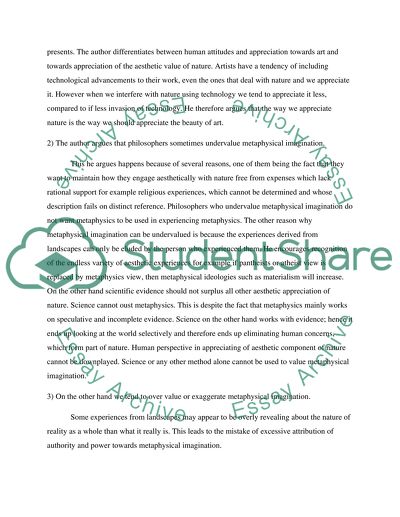Analysis of the 6th Chapter of The Aesthetics of the Natural Essay. Retrieved from https://studentshare.org/environmental-studies/1448551-analysis-of-a-chapter
Analysis of the 6th Chapter of The Aesthetics of the Natural Essay. https://studentshare.org/environmental-studies/1448551-analysis-of-a-chapter.


